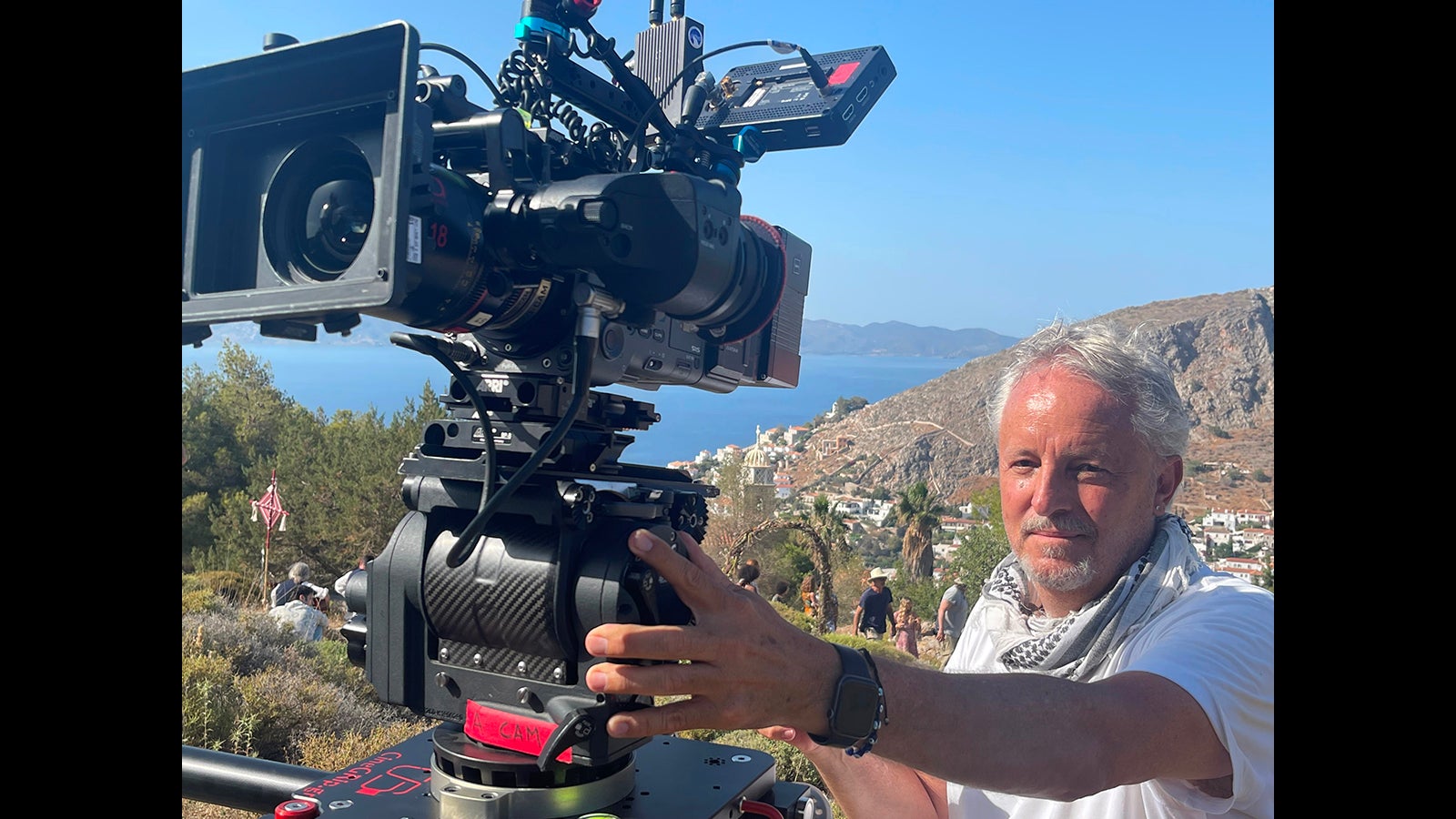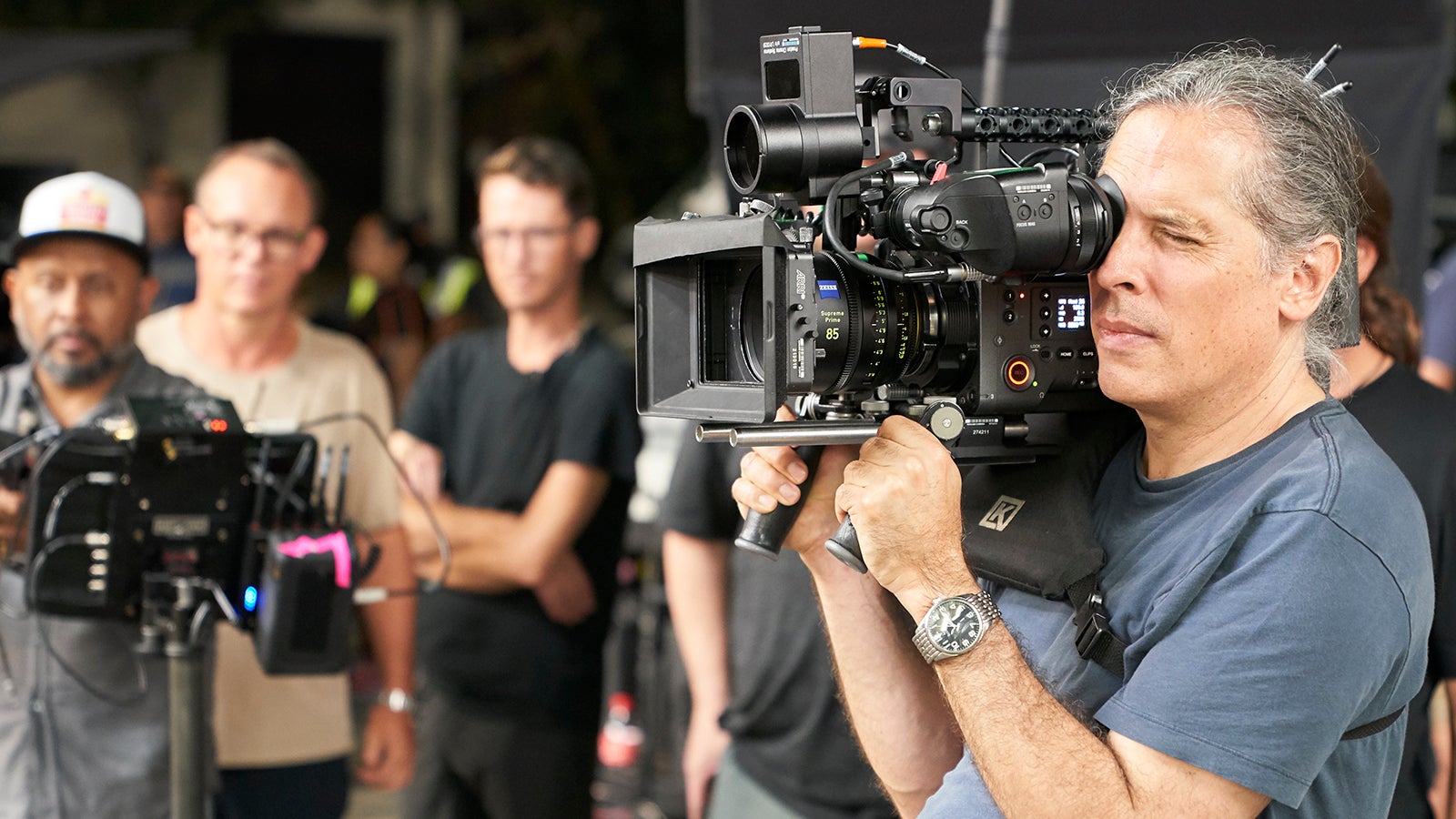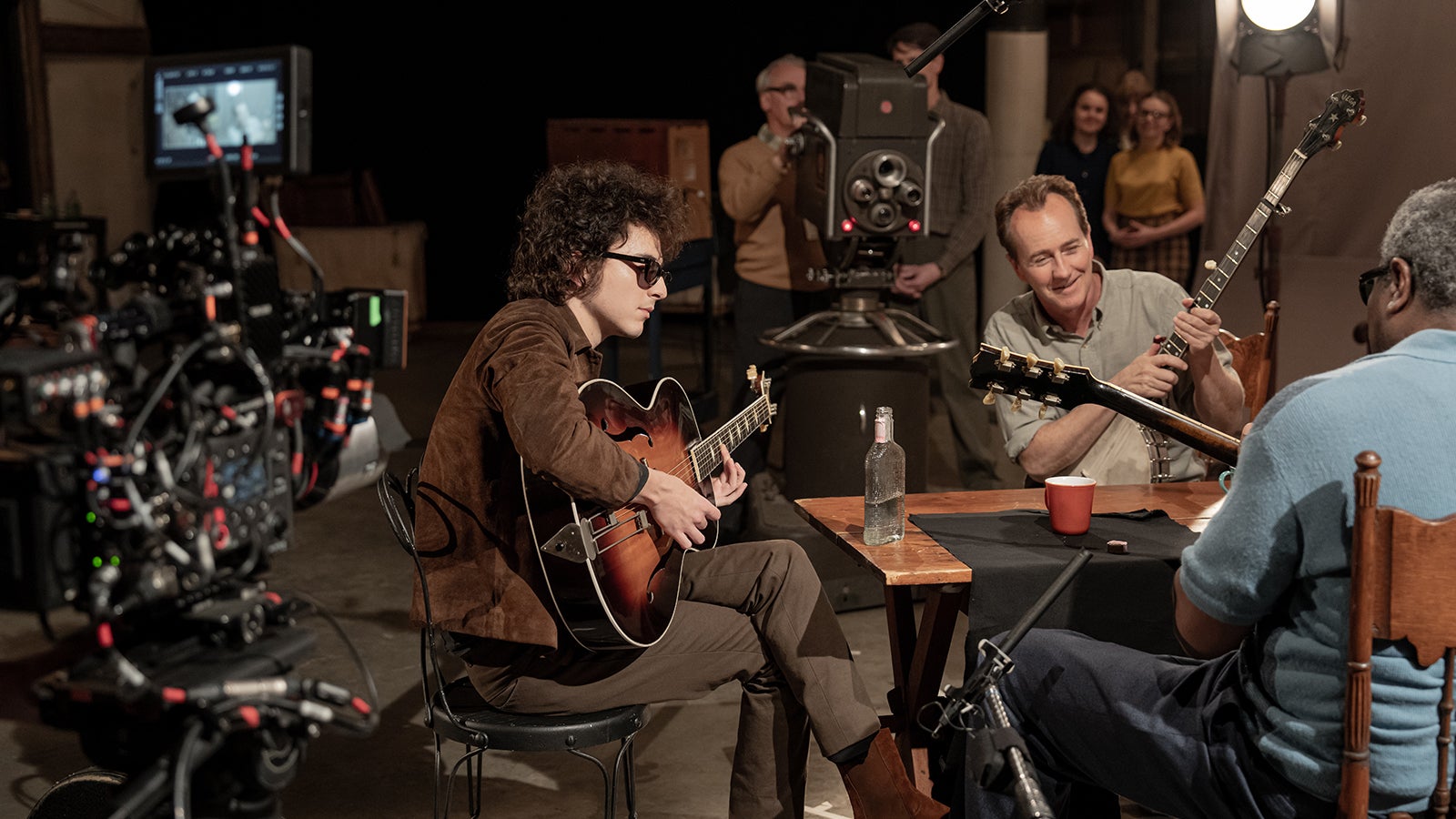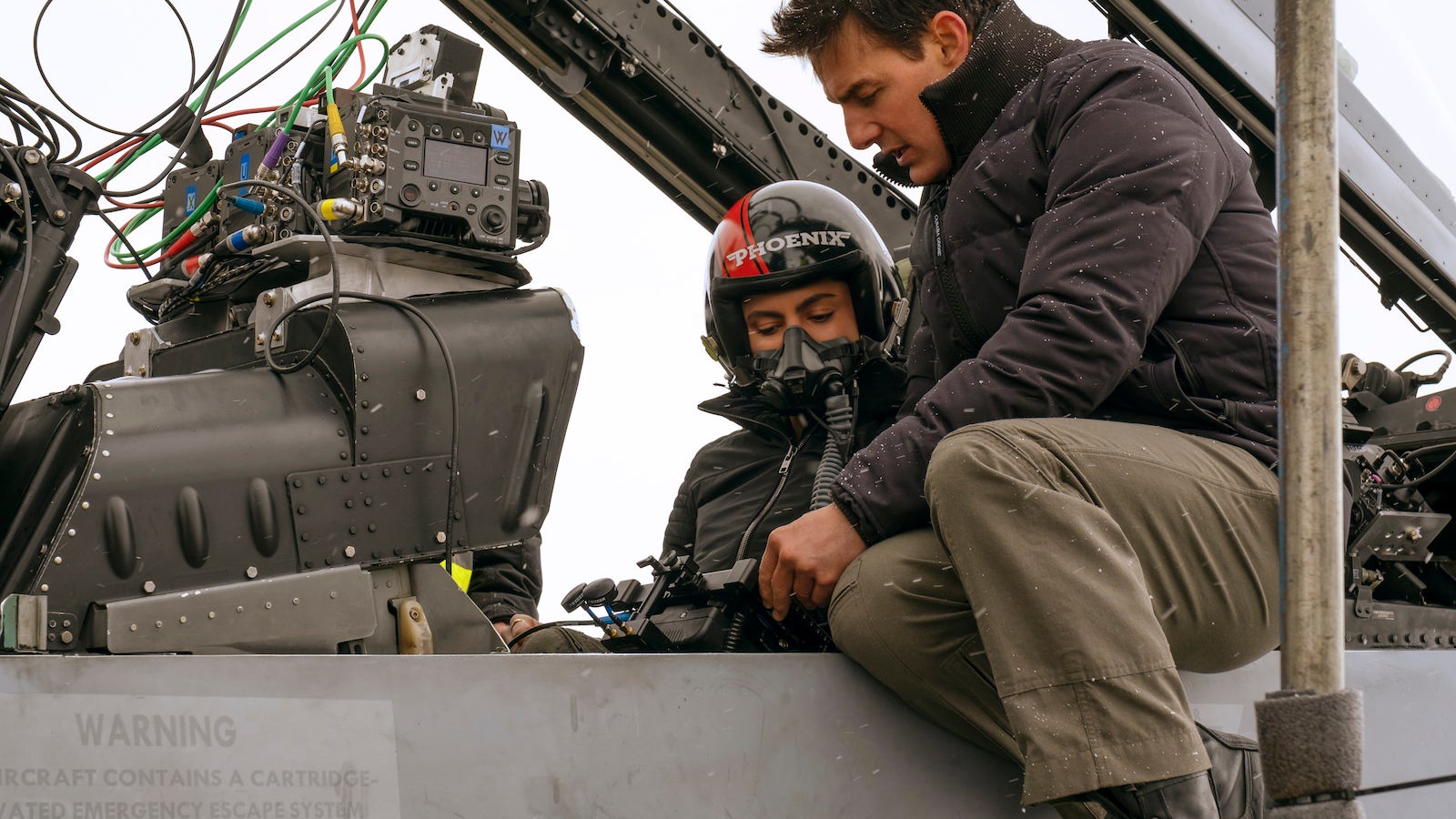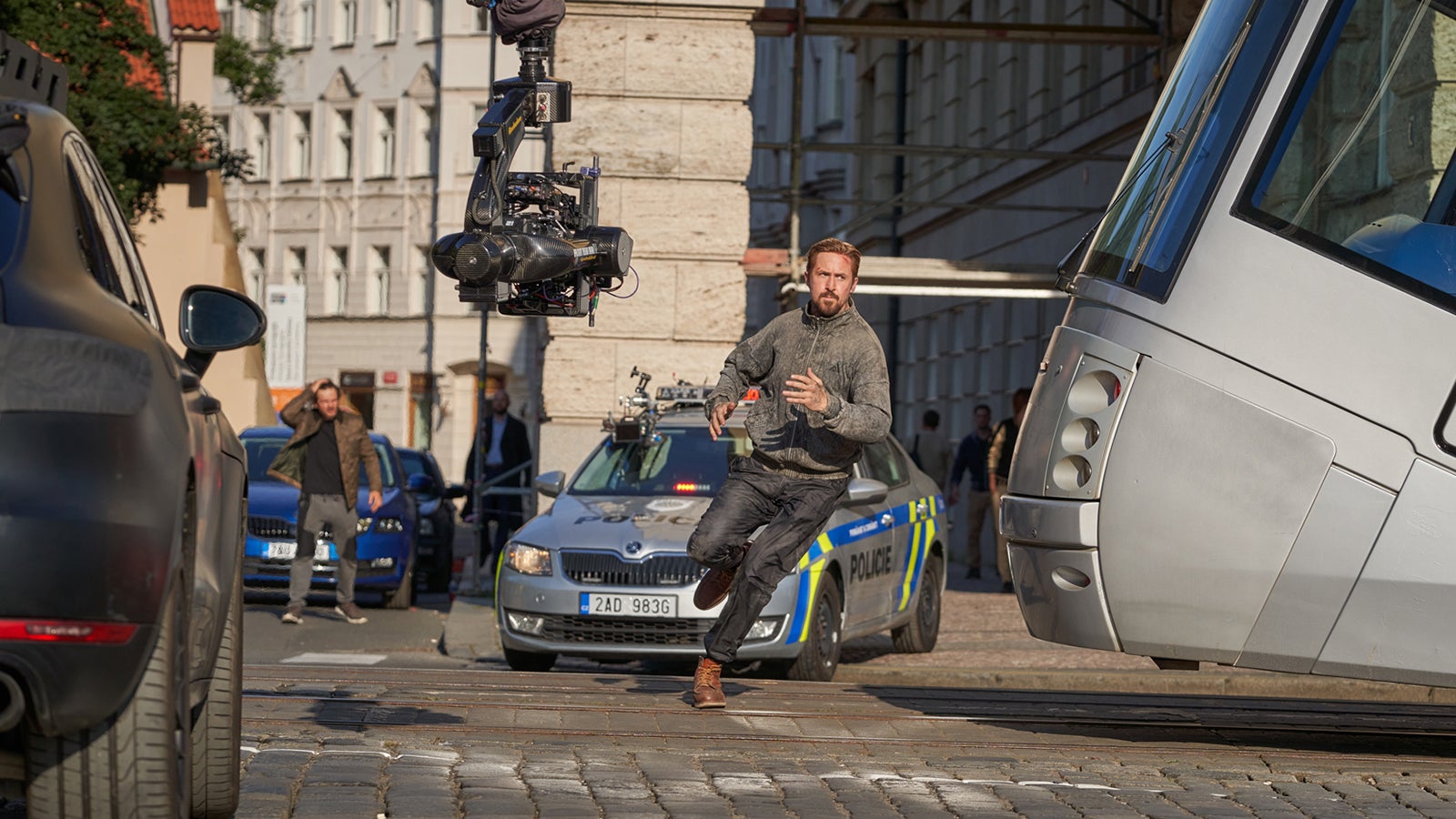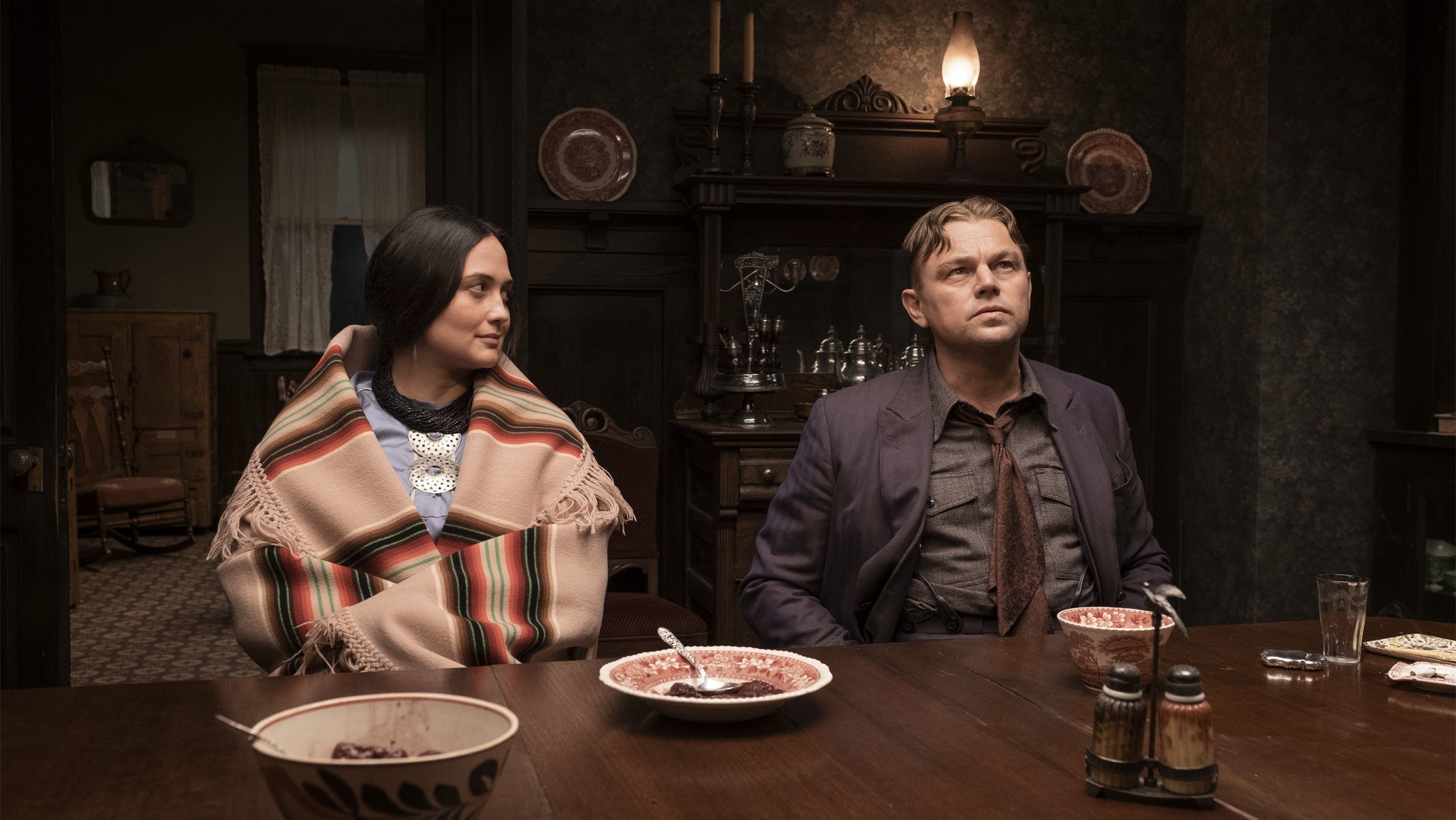
02-26-2024 - Case Study
How DP Rodrigo Prieto Combined Film & VENICE to Create Martin Scorsese’s Masterpiece ‘Killers of the Flower Moon’
By: Oakley Anderson-Moore
The Irishman. The Wolf of Wall Street. Killers of the Flower Moon. What do all these Martin Scorsese films have in common? They were all shot by Director of Photography Rodrigo Prieto, ASC.
For his most recent collaboration, Prieto has been nominated by the Academy Awards for Best Cinematography. The film, the true story of Osage Nation member Mollie Burkhardt as she tries to save her community from murders fueled by oil and greed, is one of the most highly anticipated and heavily nominated films of the year.
Sony Cine was excited to partner with the American Society of Cinematographers to host a conversation with Rodrigo Prieto moderated by Nicole Whitaker, ASC to talk about anything from shooting the movie on film and the Sony VENICE, creating the look based on Osage tribal member input, and working with Martin Scorsese.
How Prieto’s research with the Osage people informed the look of the film
One of the most crucial aspects of making this film for Prieto was the time he spent learning from the Osage in order to make the best film possible.
“I wanted to understand the relation, for example, of the rituals of the Osage with color or with nature,” says Prieto. “I came to understand how important the sun is, for their rituals and even for the way they built their villages. It is all dependent on the orientation of the sun, day and night, sunrise, sunset, noon. So that became an important part of the visuals of the film.”
For example, the Osage shared that a burial is always done with the sun at the zenith. This meant that to be authentic, the burial of Mollie’s mother in the film would need to happen around noon.
“So we had to schedule it to be sure to start shooting at 11:30 in the morning and couldn't go past 2:00 PM, because then the sun would be too low,” explains Prieto.
The challenge became not only scheduling, but deciding how to photograph the sun and finding ways to always bring the sun into the scene.
“In the beginning of the film, there's a ritual with a pipe,” describes Prieto. “I asked Jack Fisk, the production designer, where are the windows? And he said, ‘No windows, just a hole in the top for the smoke.” Okay, that's where the sun's going to come in! And that's the source of light bouncing off the ground, lighting them. I felt that it was important, especially in the opening of the movie, to have the presence of the sun.”
Prieto also knew the film needed to capture the land as widely as possible, but didn’t want that blue streak signature to anamorphic lenses that he would normally pick.
“We wanted to capture the horizontal landscape, but anamorphic lenses sometimes have this bluish flare that was too modern for the film,” says Prieto. “Dan Sasaki at Panavision helped us adapt the T series lenses to make the flares warm, and also detuned the lens a little bit. That was one more thing that came from the conversations with the Osage in the region.”
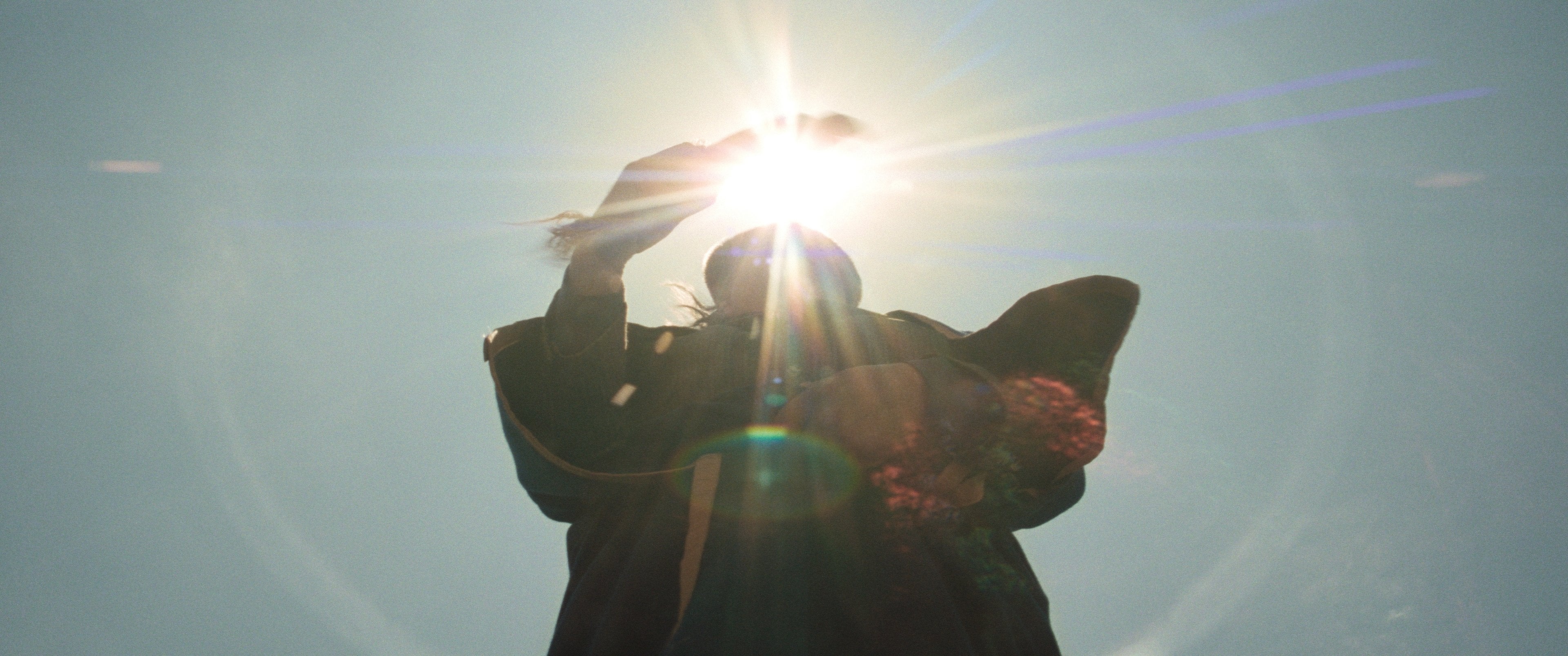
Why Prieto gave Martin Scorsese the best of both worlds shooting on film and the Sony VENICE
The visual look of Killers of the Flower Moon was also influenced by the history of photography — beginning with the use of a pinhole camera for the earliest scenes, and even incorporating Scorsese’s own vintage Bell & Howell camera. Principal photography was done using a combination of film and digital; film for nature, and Sony VENICE for night.
“I did it because it was kind of the best of both worlds, using film negative to get the naturalistic color of nature,” describes Prieto.
Prieto has spent most of his illustrious career wokring with film, and for KOTFM, used an ENR post-process bath on the negatives from Arricam LT and ST film cameras.
“For many of the night scenes, like the big night exteriors and the dusk scenes, I thought, digital will be our best bet. The Sony VENICE 2 didn't exist yet, so I used the Sony Venice, and took 2,500 ISO. It was wonderful that I could do both things, have the advantage of film negative, and then shoot digitally when I needed it.”
For Prieto, one of the most exciting aspects of being able to seamlessly mix the Sony VENICE with film is the possibilities it opens up for logistics.
“You read a script and there are many things that you think, okay, this is going to be great,” says Prieto. “And then there are things where I think, I have no clue how I'm going to do that. And one of those things on Killers of the Flower Moon were the big night exteriors on a field. How do you light until the earth goes around, right? Because moonlight doesn't stop a hundred feet away.”
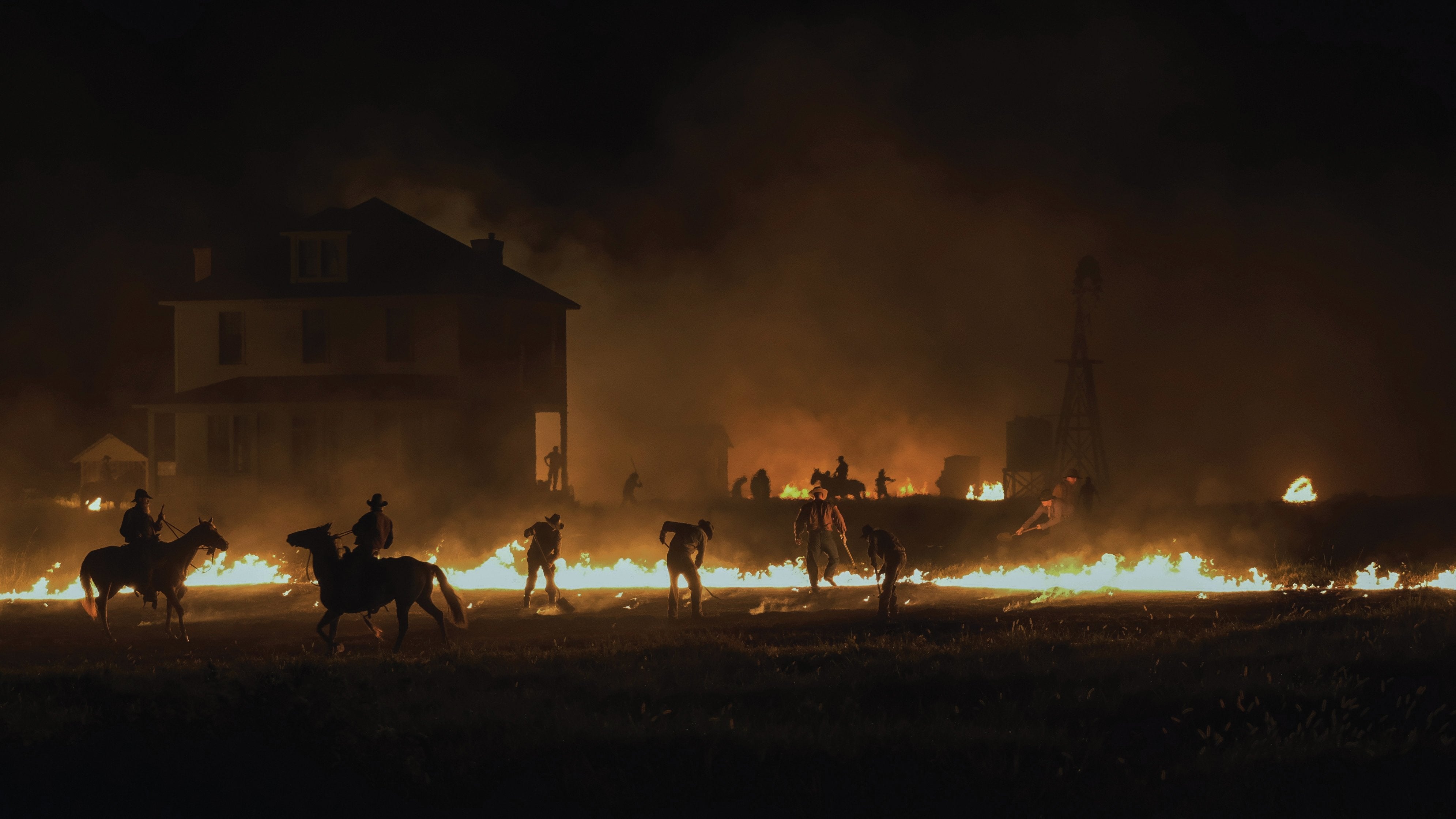
One example that Prieto gave of a tricky scene was when the FBI get together around the oil rigs.
“The first idea I had was to light it with the headlights of the cars,” recalls Prieto. “But then everything else is going to be black, and that's not going to be very interesting. We wouldn’t see the oil pumps and the towers. So I thought, the greatest would be to shoot it against the dusk sky and we'll get the silhouettes of the towers. But it must've been like six pages of dialogue. Good luck, buddy, shoot it at dusk. Even with a Sony camera! So what we did is, we shot the big wide shot at actual dusk, and then shot plates of the dusk sky. I'm revealing the trick, all the other tighter shots have a dusk sky behind it using those plates. It's all a trick anyway, right?”
Even for seasoned DPs like Nicole Whitaker, the difference between film and VENICE was impossible to spot.
“It was really beautiful, it was so seamless between the film and digital,” comments Whittaker to Prieto. “I had to really think which scenes were shot digitally and which were not!”
How Lily Gladstone’s input changed a location last-minute and it became Prieto’s favorite shot
In the original production plan, there was going to be an important shot in the film from Ernest Burkhard’s point of view where he goes in through the front door and finds Mollie and the kids in the living room.
“And that's what I lit for, and was ready for it,” describes Prieto. “Scorsese, he really incorporates his actors into many decisions, not only their performance, but ideas. They write dialogue and timing. In this case, he asked, ‘where would you be, Mollie?’ And Lily [Gladstone] said, ‘I'd be in a basement’. We didn't even know if there was a basement on this house. We're shooting this tonight and we already shot all this other stuff and it's getting late. So we went and looked, and oh yeah, there is a basement in the kitchen. I asked the art department, ‘Please, please find an oil lamp.’ I need something to justify the light in the bottom. It'd be weird if there were electricity in the basement. Sometimes as a DP, time is such an important thing. You know exactly how long you have, and when you have to have it ready. At that moment, there was a little bit of panic and thinking, ‘Oh man, we're not going to make it.’ And for me, it's one of my favorite shots in the movie.”
To Prieto, the shot on steadicam with Ernest opening the basement door to see Mollie down there with just an oil light and the sound of scared, crying babies became one of the film’s most symbolic moments of vulnerability.
“And I'm glad because it is a powerful moment. That's one thing I've learned from this space, the flexibility of being in the moment and letting things flow and happen. Scorsese just lets it happen.”
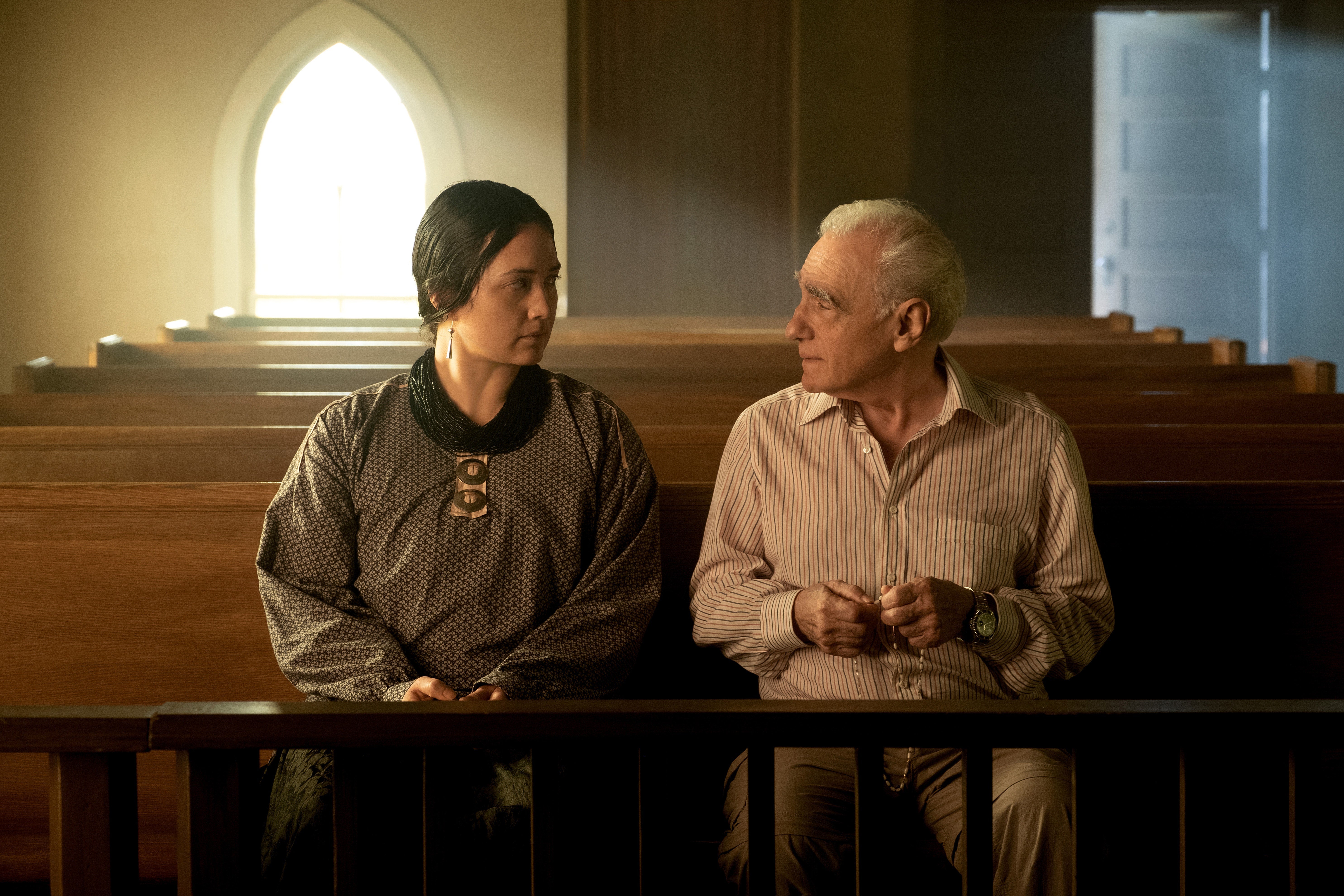
What it’s like working with Martin Scorsese and two cameras pointed at the talented Robert De Niro
Killers of the Flower Moon, like many of Scorsese’s films, is a testament to rich characters in the frame.
“Basically every dialogue scene in the movie we shot with two cameras opposing, which is really complicated because any light you do for one shot is also affecting the other shot. You have to think of in terms of two backgrounds. So it's pretty tricky. Backlight for one actor is the front light for the other.
This is also tricky knowing that Martin Scorsese usually does only one or two takes per shot, and you’re working with acting legends like Leonardo DiCaprio and Robert De Niro. Prieto had to keep finding techniques like having the cameras be on sliders so they could move incrementally whenever needed.
“You can't tell Robert De Niro, ‘Hey, I don't see one of your eyes. Move to your left.’ The camera has to do it with him. It's challenging, but it serves the movie, and that's what's important.”
Killers of the Flower Moon is not only up for the Academy Award in Best Cinematography, but nine others including Best Picture, Best Film Editing, Best Actress, and Best Production Design!
